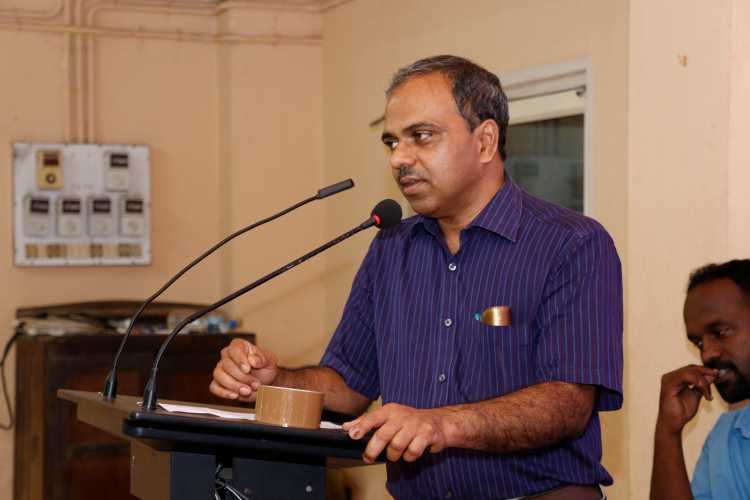
Government Medical College, Kottayam is nothing short of a miracle. If you go by the looks, it can pass off as a well-run private hospital. Its cleanliness, process-driven management and dedicated staff set it apart from the country’s public health institutions. Its department of cardio-vascular and thoracic surgery performed 9,746 advanced surgeries including five heart transplants in the last five years, often making headlines. At the helm of this institution is Dr TK Jayakumar, superintendent of the hospital and the head of the department of cardio-vascular and thoracic surgery. In an exclusive interaction with Policy Circle, he explains how a robust public sector healthcare system can be built in India.
Kerala’s healthcare system often draws comparisons with those of advanced countries. How did the state achieve this?
This was made possible by the rulers of Kerala, pre- and post-Independence. Education and health complement each other. From the days of Travancore, the rulers had a vision and commitment towards developing education and health infrastructure in Kerala. Kerala’s educated population also understood the need of a public healthcare system. Awareness among the people and the commitment of the rulers together helped build a robust public healthcare infrastructure.
One hears stories of the poor state of healthcare facilities in states like UP, Bihar, Rajasthan and Gujarat. So many children die in government hospitals. Can these states have a healthcare system that can tackle these challenges?
The government sector has played a big role in Kerala. Kerala’s public healthcare system always had high quality manpower, but lacked in infrastructure facilities. Recently, there has been an increased flow of government funds into the healthcare system. Of course, we also faced shortage of oxygen, disruptions in power and water supply during the recent floods. But we built backup systems with the help of the government and the people. That’s how the Northern and Western states can tackle infant deaths, system collapses and lack of facilities.
What is the role of private hospitals in Kerala’s healthcare sector?
Public sector caters to only 30% of the state’s healthcare needs. The rest 70% is taken care of by the private sector. The missionary hospitals made healthcare affordable in the last century along with the government hospitals. The corporate hospitals are also playing a big hand in improving healthcare facilities in the state.
There are huge disparities in the public healthcare systems in different states of India. Can Kerala provide a model that can be emulated by the other states?
While many of the states have developed a strong network of private hospitals, there is a need to enhance the public healthcare infrastructure. Most Indians cannot afford treatment at private hospitals. A healthcare emergency can break the financial stability of even upper middle-class families. A vibrant public sector is needed to cater to the poor and the middle class. It can contain the cost of healthcare in the private sector by setting a benchmark. Kerala’s advancements in healthcare can be replicated in other Indian states.
Kottayam medical college is seen as a shining example of Kerala’s healthcare achievements. What made Kottayam medical college shine?
We also faced the same issues faced by other public healthcare facilities in the country. A govt hospital has badly maintained surroundings, a cynical and demotivated staff and badly-behaved patients. Of course, the situation cannot be compared to that in other states. It was always better here.
READ: Budget 2020 — A critical reading of Economic Survey
I had made some improvements as the head of cardiothoracic department here. I got immense support from the doctors and staff, public, politicians and the media. They have continued their support in my new role too. I started by creating a clean environment — good roads, gardens, and clean and neat buildings. There was no well-run housekeeping department and established systems to run the hospitals. We created processes for housekeeping and infection control. I started an in-service education wing. This helped me identify a team of committed doctors and staff to run the hospital. Initially I met with some resistance, but it faded off soon. These steps created a momentum towards developing systems and processes that work without supervision.
How do you balance your responsibilities as a doctor and an administrator?
This involves a lot of hard work. There are days when I work 18-20 hours. One tends to enjoy hard work when it gives results. My team of dedicated doctors and staff makes things easy for me. They deserve a lot of credit for the achievements of the hospital.
Can your achievements at Kottayam Medical College be replicated at the state/national levels? Have you mapped the processes for the benefit of other institutions?
The Kerala government has accepted the developments here as a model for other hospitals in the state. Now all medical colleges in Kerala have nursing education wings, infection control activities and a modernisation process. The developments are well-documented and can be replicated through inter-governmental coordination.
Anil Nair is Founder and Editor, Policy Circle.


